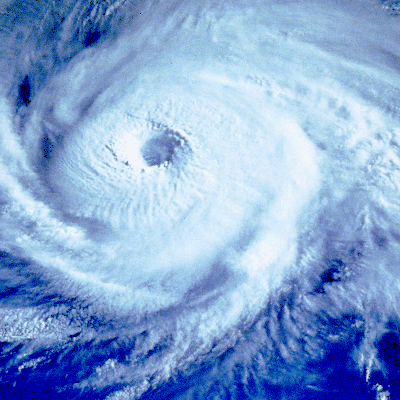
Typhoon from a satellite1)Normally, the viscous boundary layer would stop vortices. However in the world there are owners of good luck who take a disaster and turn it into good fortune. The Typhoon is one of them. In the tropical seas where typhoons occur, the viscous boundary layer near the sea's surface (called the Ekman layer here) tries to stop the typhoon, and winds blow across the Ekman layer toward the center of the typhoon.
However, there is a lot of humid air above the tropical seas. That humid air is the typhoon's fuel. In other words, the Ekman layer is not stopping the typhoon at all, but actually
gathering fuel and feeding it.
This is how typhoons grow and grow above the tropical seas.